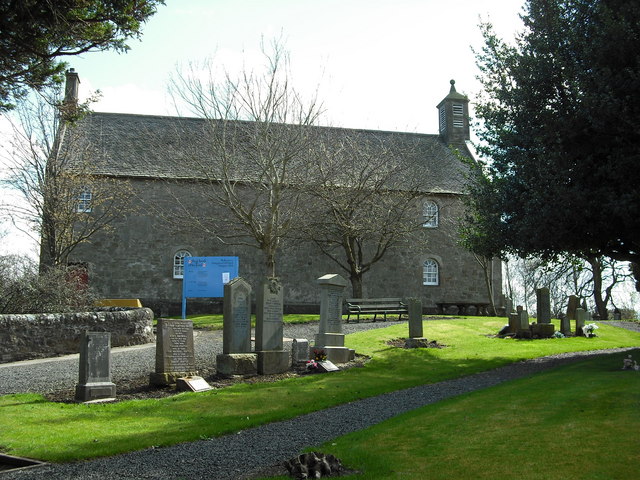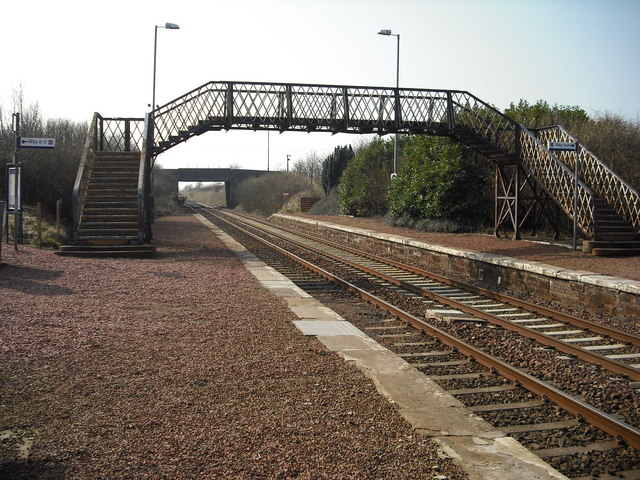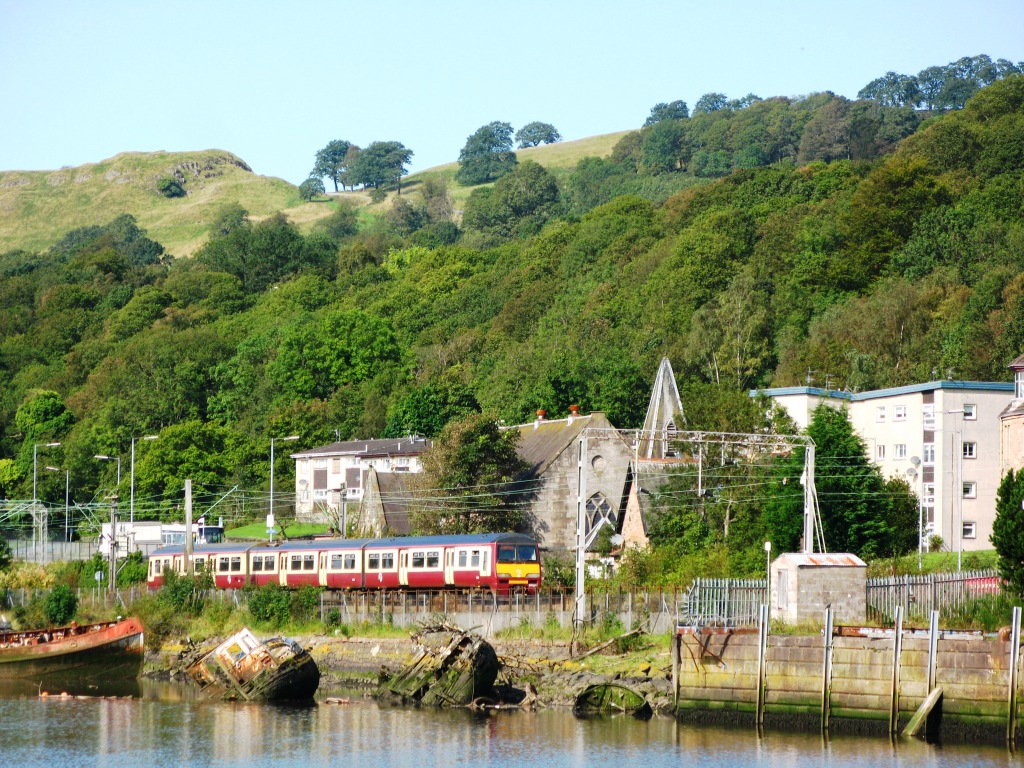|
Livingston South Railway Station
, symbol_location = gb , symbol = rail , image = Livingston South railway station, Lothian (geograph 6178120).jpg , caption = Livingston South in 2019, following rebuilding and electrification works , borough = Livingston, West Lothian , country = Scotland , coordinates = , grid_name = Grid reference , grid_position = , manager = ScotRail , platforms = 2 , code = LVG , original = BR Scottish Region , years = 6 October 1984 , events = OpenedButt (1995), page 145 , mpassengers = , footnotes = Passenger statistics from the Office of Rail and Road Livingston South railway station is one of two railway stations serving Livingston in West Lothian, Scotland. It is located on the Shotts Line, west of on the way to . It is managed by ScotRail, who provide all train services. The town of L ... [...More Info...] [...Related Items...] OR: [Wikipedia] [Google] [Baidu] |
Livingston, Scotland
Livingston ( sco, Leivinstoun, gd, Baile Dhunlèibhe) is the largest town in West Lothian, Scotland. Designated in 1962, it is the fourth post-war new town to be built in Scotland. Taking its name from a village of the same name incorporated into the new town, it was originally developed in the then-counties of Midlothian and West Lothian along the banks of the River Almond. It is situated approximately fifteen miles (25 km) west of Edinburgh and thirty miles (50 km) east of Glasgow, and is close to the towns of Broxburn to the north-east and Bathgate to the north-west. The town was built around a collection of small villages, Livingston Village, Bellsquarry, and Livingston Station (now part of Deans). The town has a number of residential areas. These include Craigshill, Howden, Ladywell, Knightsridge, Deans, Dedridge, Murieston, Almondvale, Eliburn, Kirkton, and Adambrae. There are several large industrial estates in Livingston, including Houston industrial e ... [...More Info...] [...Related Items...] OR: [Wikipedia] [Google] [Baidu] |
Shotts Line
The Shotts Line is a suburban railway line linking and via in Scotland. It is one of the four rail links between the two cities. Between Glasgow Central and , the line is shared with the West Coast Main Line (WCML), before branching off towards , rejoining the Edinburgh branch of the WCML at Midcalder Junction. The line's electrification was completed in early April 2019. Glasgow to Edinburgh services The Shotts line does not carry the principal service between the cities, with the journey taking around half as long again as the fast and frequent Glasgow Queen Street-Edinburgh service via Falkirk, which is the premier commuter link between the two cities. History of route The majority of the route follows ex-Caledonian Railway metals, with the North British Railway at the Edinburgh end. * Glasgow Central Lines ( CR) * Polloc and Govan Railway between Eglinton Street Tunnels and (CR) * Clydesdale Junction Railway between and (CR) * Cleland and Midcalder Line between ... [...More Info...] [...Related Items...] OR: [Wikipedia] [Google] [Baidu] |
Railway Stations Opened By British Rail
Rail transport (also known as train transport) is a means of transport that transfers passengers and goods on wheeled vehicles running on rails, which are incorporated in tracks. In contrast to road transport, where the vehicles run on a prepared flat surface, rail vehicles (rolling stock) are directionally guided by the tracks on which they run. Tracks usually consist of steel rails, installed on sleepers (ties) set in ballast, on which the rolling stock, usually fitted with metal wheels, moves. Other variations are also possible, such as "slab track", in which the rails are fastened to a concrete foundation resting on a prepared subsurface. Rolling stock in a rail transport system generally encounters lower frictional resistance than rubber-tyred road vehicles, so passenger and freight cars (carriages and wagons) can be coupled into longer trains. The operation is carried out by a railway company, providing transport between train stations or freight customer facili ... [...More Info...] [...Related Items...] OR: [Wikipedia] [Google] [Baidu] |
Railway Stations In West Lothian
Rail transport (also known as train transport) is a means of transport that transfers passengers and goods on wheeled vehicles running on rails, which are incorporated in tracks. In contrast to road transport, where the vehicles run on a prepared flat surface, rail vehicles (rolling stock) are directionally guided by the tracks on which they run. Tracks usually consist of steel rails, installed on sleepers (ties) set in ballast, on which the rolling stock, usually fitted with metal wheels, moves. Other variations are also possible, such as "slab track", in which the rails are fastened to a concrete foundation resting on a prepared subsurface. Rolling stock in a rail transport system generally encounters lower frictional resistance than rubber-tyred road vehicles, so passenger and freight cars (carriages and wagons) can be coupled into longer trains. The operation is carried out by a railway company, providing transport between train stations or freight customer facili ... [...More Info...] [...Related Items...] OR: [Wikipedia] [Google] [Baidu] |
Electric Multiple Unit
An electric multiple unit or EMU is a multiple-unit train consisting of self-propelled carriages using electricity as the motive power. An EMU requires no separate locomotive, as electric traction motors are incorporated within one or a number of the carriages. An EMU is usually formed of two or more semi-permanently coupled carriages, but electrically powered single-unit railcars are also generally classed as EMUs. The great majority of EMUs are passenger trains, but versions also exist for carrying mail. EMUs are popular on commuter and suburban rail networks around the world due to their fast acceleration and pollution-free operation. Being quieter than diesel multiple units (DMUs) and locomotive-hauled trains, EMUs can operate later at night and more frequently without disturbing nearby residents. In addition, tunnel design for EMU trains is simpler as no provision is needed for exhausting fumes, although retrofitting existing limited-clearance tunnels to accommodate the ... [...More Info...] [...Related Items...] OR: [Wikipedia] [Google] [Baidu] |
British Rail Class 385
The British Rail Class 385 ''AT200'' is a type of electric multiple unit built by Hitachi Rail for Abellio ScotRail. A total of 70 units have been built, divided into 46 three-car and 24 four-car sets. Based on the design of the Hitachi A-train, they are part of the Hitachi AT200 product family. The trains were built to operate services on newly electrified lines in the Central Belt on a mixture of both suburban and inter-urban routes. Having been ordered by Abellio ScotRail during April 2015, the first trainsets entered service during late July 2018. Their introduction was somewhat delayed due to the need for infrastructure works to be completed, as well as minor technical issues with the trainsets being uncovered. By December 2019, all 70 of the Class 385 trainsets had been delivered. Hitachi has proposed developing a battery electric multiple unit (BEMU) variant of the Class 385, allowing such a trainset to traverse lines that aren't electrified at present. History In Octobe ... [...More Info...] [...Related Items...] OR: [Wikipedia] [Google] [Baidu] |
Cattle Creep
A cattle creep is a small, field-to-field access for farm animals, usually to allow passage beneath an obstacle such as a road, canal, or railway embankment. Those under roads or railways may be termed underpasses. As they are intended primarily for cattle or other livestock, cattle creeps usually have a low head height and are uncomfortable for humans to use. On Dartmoor, in south-west England, the term sheep creep is used to describe a purposely constructed gap in the base of a drystone wall, commonly topped with a granite lintel. The gap allows sheep to pass from field to field, but is deliberately too small for cattle or ponies. Similarly in Cornwall small gaps are constructed in Cornish hedges to allow sheep to pass through to graze the cliff-tops. In order to prevent sheep passing through the gap is covered using a large slab of slate. See also *Wildlife crossing *Accommodation bridge In the United Kingdom, an accommodation bridge or occupation bridge is one that p ... [...More Info...] [...Related Items...] OR: [Wikipedia] [Google] [Baidu] |
North Clyde Line
The North Clyde Line (defined by Network Rail as the ''Glasgow North Electric Suburban'' line) is a suburban railway in West Central Scotland. The route is operated by ScotRail Trains. As a result of the incorporation of the Airdrie–Bathgate rail link and the Edinburgh–Bathgate line, this route has become the fourth rail link between Glasgow and Edinburgh. Route The North Clyde Line (known as Dunbartonshire - Glasgow, Cumbernauld and Falkirk Grahamston in timetables), electrified by British Rail in 1960, ran east–west through the Greater Glasgow conurbation, linking northern Lanarkshire with western Dunbartonshire, by way of the city centre. Fifty years later, in 2010, the line was extended by Network Rail east from Airdrie, by way of re-opening the line to Bathgate meeting up with the line re-opened by British Rail from Edinburgh. The main core of the route runs from to via and Glasgow Queen Street (Low Level). To the east of the Glasgow city centre, there i ... [...More Info...] [...Related Items...] OR: [Wikipedia] [Google] [Baidu] |
Scotland
Scotland (, ) is a country that is part of the United Kingdom. Covering the northern third of the island of Great Britain, mainland Scotland has a border with England to the southeast and is otherwise surrounded by the Atlantic Ocean to the north and west, the North Sea to the northeast and east, and the Irish Sea to the south. It also contains more than 790 islands, principally in the archipelagos of the Hebrides and the Northern Isles. Most of the population, including the capital Edinburgh, is concentrated in the Central Belt—the plain between the Scottish Highlands and the Southern Uplands—in the Scottish Lowlands. Scotland is divided into 32 administrative subdivisions or local authorities, known as council areas. Glasgow City is the largest council area in terms of population, with Highland being the largest in terms of area. Limited self-governing power, covering matters such as education, social services and roads and transportation, is devolved from the Scott ... [...More Info...] [...Related Items...] OR: [Wikipedia] [Google] [Baidu] |
West Lothian
West Lothian ( sco, Wast Lowden; gd, Lodainn an Iar) is one of the 32 council areas of Scotland, and was one of its shires of Scotland, historic counties. The county was called Linlithgowshire until 1925. The historic county was bounded geographically by the River Avon, Falkirk, Avon to the west and the River Almond, Lothian, Almond to the east. The modern council area occupies a larger area than the historic county. It was reshaped following local government reforms in 1975: some areas in the west were transferred to Falkirk (council area), Falkirk; some areas in the east were transferred to Edinburgh; and some areas that had formerly been part of in Midlothian were added to West Lothian. West Lothian lies on the southern shore of the Firth of Forth and is predominantly rural, though there were extensive coal, iron, and shale oil mining operations in the 19th and 20th centuries. These created distinctive red-spoil heaps (locally known as "bing (mining), bings") throughout the ... [...More Info...] [...Related Items...] OR: [Wikipedia] [Google] [Baidu] |
Railway Station
Rail transport (also known as train transport) is a means of transport that transfers passengers and goods on wheeled vehicles running on rails, which are incorporated in tracks. In contrast to road transport, where the vehicles run on a prepared flat surface, rail vehicles (rolling stock) are directionally guided by the tracks on which they run. Tracks usually consist of steel rails, installed on sleepers (ties) set in ballast, on which the rolling stock, usually fitted with metal wheels, moves. Other variations are also possible, such as "slab track", in which the rails are fastened to a concrete foundation resting on a prepared subsurface. Rolling stock in a rail transport system generally encounters lower frictional resistance than rubber-tyred road vehicles, so passenger and freight cars (carriages and wagons) can be coupled into longer trains. The operation is carried out by a railway company, providing transport between train stations or freight customer facilit ... [...More Info...] [...Related Items...] OR: [Wikipedia] [Google] [Baidu] |
Office Of Rail And Road
The Office of Rail and Road (ORR) is a non-ministerial government department responsible for the economic and safety regulation of Britain's railways, and the economic monitoring of National Highways. ORR regulates Network Rail by setting its activities and funding requirements for each Control Period, ensuring train operators have fair access to the railway network, and enforcing compliance with its network licence. ORR also regulates High Speed 1, the Channel Tunnel, and also acts as the appeal body, controls the network statement and monitors the competitive situation of rail services in Northern Ireland. It is the competition authority for the railways and enforces consumer protection law in relation to the railways. From April 2015, ORR assumed responsibility for monitoring National Highways' management of the strategic road network – the motorways and main 'A' roads in England – and advising the Secretary of State for Transport on the levels of funding and performa ... [...More Info...] [...Related Items...] OR: [Wikipedia] [Google] [Baidu] |








